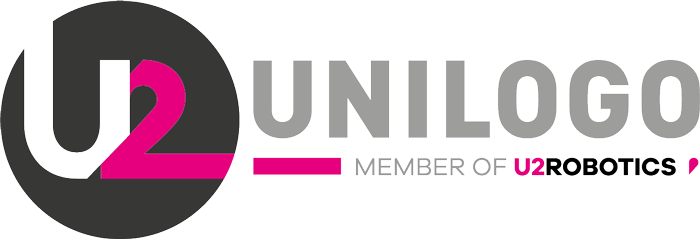The Agile system is an extension of the commonly used Lean methods. It is a method of organising production, mainly addressed to companies focused on unit or low-volume production.
Table of contents:
- What is the Agile method?
- Agile method: principles
- Agile manufacturing: how to implement it?
- Agile method. Summary
What is the Agile method?
The core idea behind Agile methodology is to approach production in a process-oriented manner so that it immediately adapts to changing customer requirements and market realities; All this, of course, while maintaining control over production costs and the quality of the products on offer. Agile methodology is often referred to as an evolution of Lean Manufacturing, which places more emphasis on manufacturing flexibility.
Today, the Lean philosophy is widely known and applied. Agile methods are far less common in production. The word “agile” captures the essence of the concept. Like Lean methods, it promotes the minimisation of waste, but also emphasises adapting production to changing customer expectations in the best and fastest way possible and exploiting opportunities in the market.
A company that wants to implement agile methods of production should, first of all, always be ready to respond to opportunities as they arise. But not only that. It is also important to be able to adapt to various risks and volatility in the market.
Agile businesses are constantly ready for change. For this purpose, they use e.g. modern machinery like the Cosmoline 40 production line from Unilogo, which allows short changeover times. This is why the Agile methodology is nothing more than the ability of a company to introduce rapid changes that will have tangible effects on its production processes and operations. Here are the key Agile principles:
- rapid response to market volatility and uncertainty,
- focus on developing key competences,
- delivering products that are specifically tailored to customers’ needs and expectations,
- combining different technologies,
- external and internal integration,
- focus on customer satisfaction,
- self-organisation of staff teams.
Agile method: principles
Many Agile methods have been in use for decades. However, the beginning of agile practices in production is actually considered to be 2001, when a group of developers produced the Manifesto for Agile Software Development. Although the manifesto relates strictly to software, its principles can be applied to various areas of manufacturing.
Here are the core Agile values according to the manifesto:
- people and interactions are more important than processes and tools,
- developing software that works is more important than detailed documentation,
- cooperation with customers is more important than negotiating contracts,
- responding to change is of greater significance than following an agreed-upon plan.
The manifesto makes it clear that the elements on the left of the slogans (e.g. people, customer) are much more important than those on the right (documentation, contracts). This makes it possible to make the production more agile and focus on the desired end product, rather than the processes leading to it.
These principles were also tailored to the needs of production companies. For manufacturing companies, Agile principles are as follows:
- customers are involved in the design and manufacturing process,
- the primary objective is to respond quickly to customer needs,
- the product should be tailored to the individual needs of the customers,
- production must be ready for quick reconfiguration.
These principles clearly show that agile approach focuses on the ability to act quickly and respond to changing customer needs.
Agile manufacturing: how to implement it?
Implementing Agile methods in a company is certainly not the easiest process. It involves a change in the approach of all company personnel to carrying out their responsibilities. During this process, the company should focus on five basic principles.
First, the key to success in introducing Agile principles is to have a thorough understanding of what they mean for the entire organisation. Failure to understand the basics of this system can cause disappointment and further aggravate the problems that are bound to arise during the transition period.
A common mistake companies make is to use half-measures, i.e. to introduce only those Agile practices that are easiest to implement. This mistake obviously reduces the efficiency of the entire transformation and can create dissatisfaction within the structures of the organisation.
To ensure that Agile methods are implemented, it is essential that employees are properly educated and made aware of the new system before the company even begins to introduce it. Changing the traditional mind-set and moving towards more flexibility can be difficult for them at first. Teams need to understand the reasons behind the change, the extent of the change and be gradually introduced to it.
An in-depth analysis of the company’s needs, goals and capabilities is also necessary before implementing Agile methods. These methods should take into account the characteristics of the market or industry and the current work culture within the company. Approaching the analysis conscientiously and taking into account both the advantages and disadvantages of the transition will allow the company to get through the difficult period of change more quickly and easily.
It is also important to remember that introducing Agile principles is just the beginning of the journey. In line with the flexible spirit of the agile approach, changes in the company will be happening all the time. It is necessary to constantly analyse the extent to which the available tools are being used and to react quickly to problems as they arise.
Agile method. Summary
To sum up, Agile methodology is all about focusing the company’s efforts on meeting the ever-changing needs of the customer. High flexibility is one of the cornerstones of this production approach. In order to achieve this flexibility, there must be significant changes in the company’s hierarchy, the decentralisation of management and the formation of teams of employees who are able to organise their work independently.
To introduce Agile principles in a manufacturing company, it may be necessary to purchase special machinery that has the versatility and ability to quickly adapt to new types of production and will give your organisation the flexibility that is so important for Agile methodology. If you are looking for this kind of equipment, we invite you to take a look at Unilogo’s offer. Using the contact form available on our website, you can quickly get in touch with our specialists, who will help you choose the best solution for you and your company.


